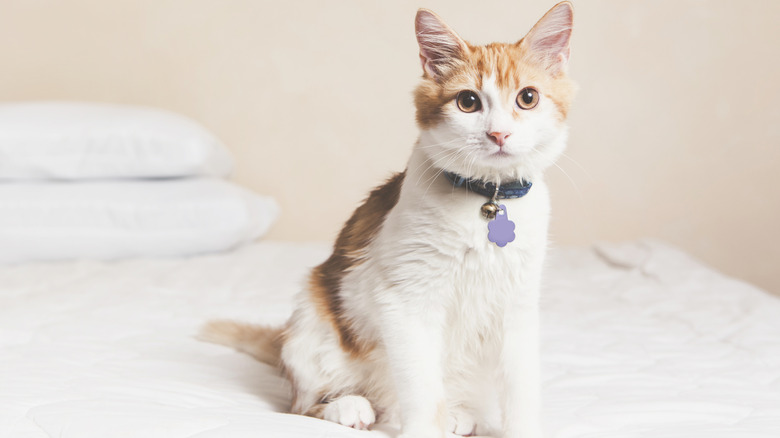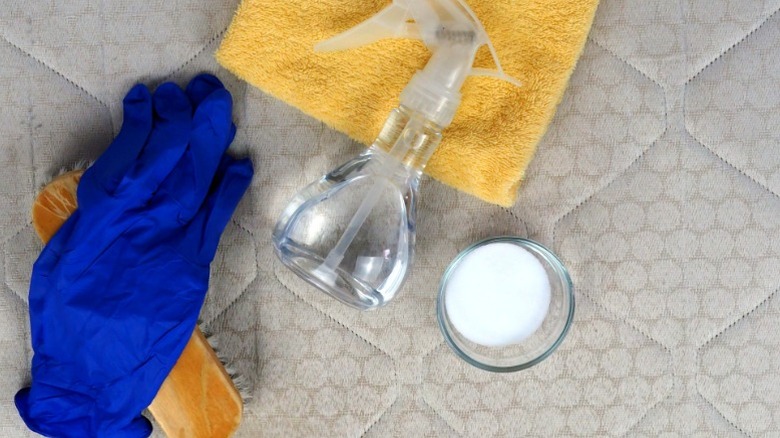The Kitchen Essential That Helps Eliminate Cat Urine Odors From Your Mattress
We may receive a commission on purchases made from links.
Cats are some of the best pets to have, but that doesn't mean we have to love the smell of their urine. The pungent odor can be hard to stomach at times — and when it's coming from your mattress, it can seem even worse. If your cat pees on the bed and you want an easy solution, you likely already have what you need in your kitchen cabinet. Baking soda is an all-natural powerhouse that can help eliminate cat urine odors, especially with the addition of vinegar and other simple ingredients. There are many baking soda cleaning hacks that are worth trying in the home, and if you have a cat, this is one you'll want to know.
If you realize your kitty has peed on your mattress (or anywhere in the home), it's a good idea to get it cleaned up as soon as possible. After all, cats often use the same area to urinate if the odor remains. Some turn to enzyme products, like Rocco & Roxie Stain & Odor Eliminator, to clean up after their pets, which typically works the best. Yet, baking soda and vinegar, two multi-purpose ingredients, are usually in the home already, making them more convenient. Start by stripping the linens from the bed and getting them into the wash (urine is also one of several unpleasant laundry odors you can banish with baking soda). Then, you can turn to the mattress.
Time to banish that cat pee odor with this kitchen essential
Gently blot the mattress with a towel to get rid of any moisture. Don't scrub the area though, as it will only make it worse. After the cat urine is absorbed, add one part water and one part white vinegar to a spray bottle. Next, pour in a tiny bit of laundry detergent, and shake the bottle to mix it in. Spray the mixture onto the part of the mattress your cat peed on, and let it sit for 15 minutes. Then, use another towel to gently blot again until it's less wet.
Just this process alone can be helpful, but using baking soda to neutralize the smell is what makes it truly effective. Take a box of baking soda, and sprinkle it generously onto the urine spot, making sure it's completely covered. After waiting a minimum of eight hours, you can vacuum it up using the attached hose. Your once-soiled mattress should be cleaner and smell better. If not, repeat the steps to get the urine out of your mattress and eliminate the odor.
It's important to determine why your kitty is urinating on the bed in the first place. Cats with health issues and those that are stressed from changes in the home can resort to this type of behavior. Another possibility may have to do with their litter box. If they're not comfortable with the box's location or the container, they might choose your bed as an alternative. While it's possible to clean urine from a mattress with baking soda, discovering the root of the problem is key.

